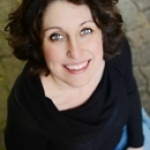
Mr. Ken Busby
The season of Thanksgiving in Arts Education
Posted by Dec 02, 2015

Mr. Ken Busby
It's the season of thanksgiving, and we have so much to be thankful for in a world that may, at times, seem less than hospitable.
This week, we celebrated Giving Tuesday – a reminder that while the Black Friday, Small Business Saturday, and Cyber Monday retail efforts are all important to the economy, the nonprofit world deserves equal consideration in terms of financial support for the good these organizations do in our communities.
Where would we be as a nation without our arts education nonprofit organizations? Where would we be without art and music and dance and drama and poetry and theatre?
Read More













